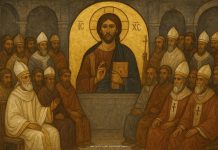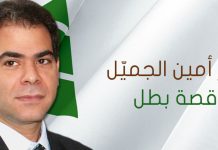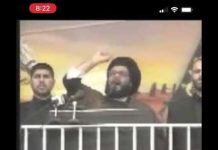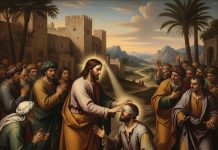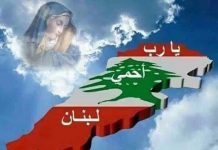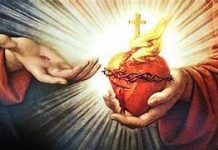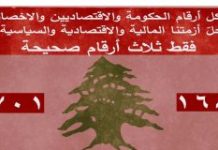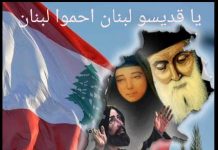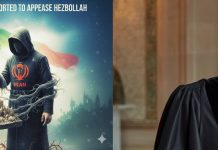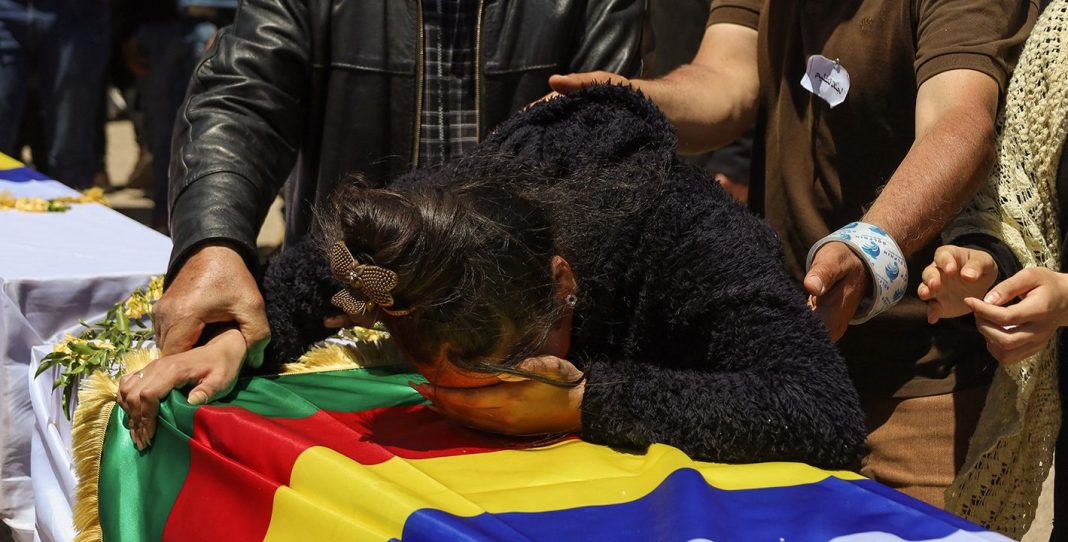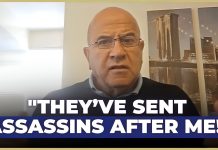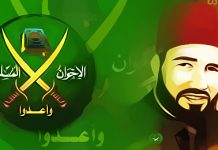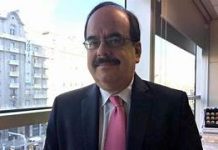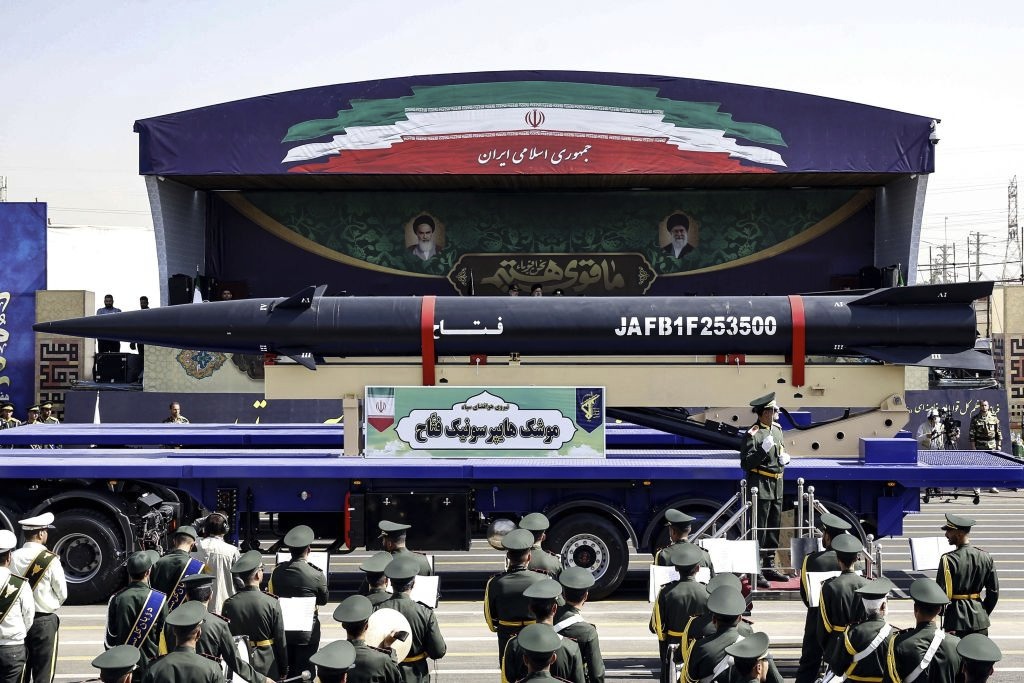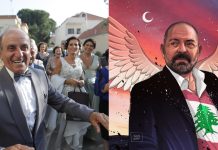دروز سوريا يقفون وحدهم… بينما تتقارب الولايات المتحدة مع حكام البلاد وترفع العقوبات، تستعد الأقليات لما هو قادم.
(ترجمة الياس بجاني بحرية بالإستعانة بعدد من مواقع الترجمة الألكترونية)
رابع غضبان/ديوان/14 أيار 2025
Syria’s Druze Stand Alone …As the U.S. lifts sanctions and embraces the country’s rulers, minorities are bracing for what comes next.
Rabeh Ghadban/Diwan/May 14, 2025
Diwan, a blog from the Carnegie Endowment for International Peace’s Middle East Program and the Malcolm H. Kerr Carnegie Middle East Center, draws on Carnegie scholars to provide insight into and analysis of the region.
In the desert night outside Suwayda, an elderly man leans on a cane, wrapped in a fleece over traditional robes, his pockets lined with ammunition. “We’ll work with anyone who treats us fairly,” he says. But if they don’t, “even a sick man throws his stick and takes up arms.”
The man is Sheikh Yahya Hajjar, leader of Rijal al-Karameh (Men of Dignity), the most prominent Druze militia in Syria. During a recent trip to Suwayda and surrounding regions, I spoke with fighters, religious leaders, and residents who described their reality in stark terms, explaining how the Druze were isolated, felt threatened, and had been left to fend for themselves.
In recent weeks, more than 100 Druze were reportedly killed after a doctored video circulated online, falsely portraying a Druze man mocking the Prophet Muhammed. Violence quickly spread through Suwayda and Druze communities around Damascus. The government disavowed responsibility, blaming “outlaws,” but the footage of tanks, shootings, and the public humiliation of Druze flooded social media.
In one clip, gunmen compel an older man to bleat like a sheep. “Are you really asking me to do this?” he says, before being slapped repeatedly. In another, young Druze men have their mustaches forcibly shaved—an act meant to degrade them, targeting a deeply-rooted cultural symbol. Humiliation, long a hallmark of Syria’s authoritarian tactics, has returned in force. In response, Sheikh Hikmat al-Hijri, a spiritual leader of the Druze in Syria, issues an urgent appeal for international protection, calling the attacks an “act of extermination.”
Anti-Druze sentiment spread elsewhere too. In Hama, protesters chanted that the “Druze are enemies of God.” At a university in Homs, another protest suggested that members of the community should be slaughtered, leading to an exodus of students back to Druze-majority areas. “We have a target on our back,” one resident told me.
This isn’t the first time. In 2015, fighters from Jabhat al-Nusra, a predecessor of Hay’at Tahrir al-Sham, which is led by Syria’s president, Ahmad al-Sharaa, killed at least 20 Druze villagers in Qalb Lozeh in Idlib Governorate. Others were coerced into converting to Sunni Islam, while Druze shrines were desecrated and graves defaced. In 2018, the Islamic State group carried out coordinated bombings and raids in Suwayda, killing over 250 people in the Druze-majority city and abducting dozens of women and children.
For many Druze, Sharaa, who fought in Iraq alongside the Islamic State before founding Hay’at Tahrir al-Sham in Syria, is seen as a continuation of extremist ideologies. They do not view today’s violence as isolated incidents, but as part of ongoing campaigns of terror that revive centuries-old Druze fears of being branded heretics and outcasts.
The pain of being abandoned by Syria’s new government is especially acute given the Druze role in the Syrian uprising. In Suwayda, protests that began in August 2023 over rising fuel prices quickly morphed into broader demands for regime change. Hundreds of protestors gathered in Suwayda’s Sahat al-Karama (Dignity Square) every Friday. The timing, coinciding with Assad’s cautious rehabilitation by parts of the international community, unsettled many. Having seen this before, I cautioned that, if given the opportunity, Assad would respond to Suwayda just as he had to other defiant Syrian cities—with bombings, forced displacement, and mass arrests. Still, as Assad’s grip weakened, Rijal al-Karameh joined opposition groups from Daraa and advanced toward the capital.
“We were in the operations room with other factions,” Sheikh Hajjar told me. “We got to Damascus hours before Hay’at [Tahrir al-Sham],” he added, letting out a quiet laugh. It had been a bold gamble. When the regime finally collapsed, the Druze expected recognition as partners in the uprising.
Instead, they were met with a cold shoulder. Sharaa sidelined Druze leaders from the country’s transitional process. Sheikh Hijri was excluded from the National Dialogue and the drafting process for the temporary constitution agreed in March. In our meeting, he described receiving only vague assurances from low-level envoys, his frustration shared by Hajjar. Without clear guarantees that post-war Syria would be a place “for all colors, not just one,” Hijri warned, the entry of government-affiliated forces “would be seen as an occupation.”
In Hader, a mixed border town near the occupied Golan Heights, tensions were palpable. A Druze sheikh had recently been shot in what many believe was a hate crime. Days later, graffiti defaced a shrine: “Shrine for the Druze and klab [dogs],” was scrawled on the structure. With no real government protection, the Druze have taken security into their own hands. Local militias patrol streets, resolve disputes, and repel incursions.
Israel has stepped into this vacuum, portraying itself as the guardian of the Druze. Days after the recent violence, Israeli warplanes launched their broadest strikes in Syria, including near the presidential palace.
Alongside its military actions, Israel has also deployed a more symbolic force: its Druze citizens. Many Druze acknowledge that religious and cultural expression is more openly safeguarded in Israel than in Lebanon or Syria, the two other countries where this million-strong community also resides. “They at least have their rights there,” Sheikh Hijri told me in our interview, “but we are still waiting.” In a carefully staged moment, Israel facilitated a pilgrimage for Syrian Druze to a holy site in northern Israel, transporting religious figures on military buses through recently occupied Syrian territory under police escort.
But while Druze loyalty is publicly praised in Israel and their flag flies freely, a right of expression not granted to Palestinians citizens of the country, most saw through the performance. Druze in Israel are the only Arabs required to serve in the military. They are deployed in Gaza, man West Bank checkpoints, and oversee detention centers holding Palestinians, many without trial. Their towns remain economically marginalized and plagued by neglect and crime. The 2018 Nation State Law codified their second-class status. The Druze have been severed from their historical and cultural roots, and Israel increasingly treats them not as part of a broader Arab or Muslim population, but as a conveniently distinct ethnoreligious group.
During my trip, residents in Hader said Israeli officials had visited them the day before, offering aid and reassurances. “They take our water already,” one man told me, gesturing toward Mount Hermon, whose snow-fed rivers cross Lebanon, Syria, and Israel. “We know nothing good will come.” A resident in Suwayda said it more bluntly: “Where were they when we were being slaughtered by [the Islamic State]?” she asked, referencing the massacre in 2018. Pointing to Israel’s seizure of 400 square kilometers of Syrian territory after the fall of the Assad regime—a move the Israelis have said would last indefinitely—she added: “This isn’t about protection. It’s about expansion.”
Last week, Israel’s intentions were laid bare. When Druze in Israel attempted to cross the border and join the fight in Syria, they were stopped by the Israeli authorities, prompting road-blocking protests in the north. Even Israeli Druze scholars and politicians have raised concerns. One former Knesset member warned that the community was being used as “a tool serving Israel’s long-term policies.”
Amid these unfolding events, questions have resurfaced among diplomats and analysts: What’s happening with the Druze? Does Hijri trust Israeli Prime Minister Benjamin Netanyahu? Would a deal with the Syrian government resolve this? The subtext is unmistakable: placing blame on the community itself rather than on the Syrian state that has failed to protect it.
What’s missing from many of these reactions is a basic understanding of what it means to live as a minority shaped by a long history of persecution and generational trauma. “Women and kids are terrified and aren’t leaving their homes,” one resident told me. That fear reverberates across Syria’s marginalized communities, especially after hundreds if not over 1,000 Alawites were killed last March in attacks by armed groups and government-affiliated forces following acts of violence by remnants of the Assad regime targeting them. Amnesty International has urged that the killings should be investigated as possible war crimes.
Equally troubling is the growing tendency from the European Union and now the United States to excuse the failures of a government, which is neither accountable nor inclusive. Under pressure to show progress toward normalization and improve access to Damascus, too many foreign and domestic actors have turned a blind eye to the records of unelected, deeply compromised leaders who are now part of Syria’s new interim government. In an apparent rush to secure business deals, President Donald Trump visited Saudi Arabia this week and announced a lifting of U.S. sanctions on Syria, before meeting with Ahmad al-Sharaa the next day in Riyadh. All this took place despite the fact that the Syrian government has failed to offer protections for minorities.
What’s happening to the Druze is not complicated. In resisting disarmament, they challenged the government’s narrative of a seamless post-conflict transition. The violent backlash that followed was no accident—it was a message. Speculation that Sheikh Hijri or the Druze have aligned with Israel misses a deeper reality. This is not a story of disloyalty; it is one of survival.
Caught between a fractured but still repressive government, emboldened extremist groups, and Israel’s regional maneuvers, Syria’s Druze are left once again to rely on the only constant they’ve ever known: themselves. “We will protect our land, dignity, and brethren,” Sheikh Hajjar told me. “Above all else.”
https://carnegieendowment.org/middle-east/diwan/2025/05/syrias-druze-stand-alone?lang=en¢er=middle-east
دروز سوريا يقفون وحدهم… بينما تتقارب الولايات المتحدة مع حكام البلاد وترفع العقوبات، تستعد الأقليات لما هو قادم.
(ترجمة الياس بجاني بحرية بالإستعانة بعدد من مواقع الترجمة الألكترونية)
رابع غضبان/ديوان/14 أيار 2025
في ليلة صحراوية خارج السويداء، يتكئ رجل مسن على عصا، ملفوفًا ببطانية صوفية فوق عباءته التقليدية، وجيوبه مبطنة بالذخيرة. يقول: “سنعمل مع أي شخص يعاملنا بإنصاف”. ولكن إذا لم يفعلوا ذلك، “حتى الرجل المريض يرمي عصاه ويحمل السلاح”.
الرجل هو الشيخ يحيى حجار، زعيم رجال الكرامة، الميليشيا الدرزية الأبرز في سوريا. خلال رحلة حديثة إلى السويداء والمناطق المحيطة بها، تحدثت مع مقاتلين وزعماء دينيين وسكان وصفوا واقعهم بعبارات صارخة، موضحين كيف تم عزل الدروز، وشعروا بالتهديد، وتُركوا يواجهون مصيرهم.
في الأسابيع الأخيرة، أفادت التقارير بمقتل أكثر من 100 درزي بعد انتشار مقطع فيديو مُعدّل على الإنترنت، يصور زوراً رجلاً درزياً يسخر من النبي محمد. وسرعان ما انتشر العنف في السويداء والمجتمعات الدرزية حول دمشق. وتنصلت الحكومة من المسؤولية، وألقت باللوم على “الخارجين عن القانون”، لكن لقطات الدبابات وعمليات إطلاق النار والإهانة العلنية للدروز اجتاحت وسائل التواصل الاجتماعي.
في أحد المقاطع، يجبر مسلحون رجلاً مسنًا على مواء كالخروف. يقول: “هل تطلب مني حقًا أن أفعل هذا؟” قبل أن يُصفع مرارًا وتكرارًا. في مقطع آخر، يتم حلق شوارب شبان دروز قسرًا—في محاولة لإذلالهم، ويستهدف رمزًا ثقافيًا راسخًا بعمق. لقد عادت الإهانة بقوة، وهي سمة مميزة لطالما اتسمت بها تكتيكات سوريا الاستبدادية. ورداً على ذلك، وجه الشيخ حكمت الهجري، الزعيم الروحي للدروز في سوريا، نداءً عاجلاً للحماية الدولية، واصفاً الهجمات بأنها “عمل إبادة”.
انتشرت المشاعر المعادية للدروز في أماكن أخرى أيضاً. ففي حماة، هتف المتظاهرون بأن “الدروز أعداء الله”. وفي جامعة في حمص، اقترح احتجاج آخر أنه ينبغي ذبح أفراد الطائفة، مما أدى إلى نزوح الطلاب عائدين إلى المناطق ذات الأغلبية الدرزية. قال لي أحد السكان: “لدينا علامة على ظهورنا”.
ليست هذه هي المرة الأولى. ففي عام 2015، قتل مقاتلون من جبهة النصرة، وهي سلف هيئة تحرير الشام التي يرأسها رئيس سوريا، أحمد الشرع، ما لا يقل عن 20 قروياً درزياً في قلب لوزة في محافظة إدلب. وأُجبر آخرون على اعتناق الإسلام السني، بينما تم تدنيس المزارات الدرزية وتشويه القبور. وفي عام 2018، نفذ تنظيم الدولة الإسلامية تفجيرات وغارات منسقة في السويداء، مما أسفر عن مقتل أكثر من 250 شخصًا في المدينة ذات الأغلبية الدرزية واختطاف العشرات من النساء والأطفال.
بالنسبة للعديد من الدروز، يُنظر إلى الشرع، الذي قاتل في العراق إلى جانب تنظيم الدولة الإسلامية قبل تأسيس هيئة تحرير الشام في سوريا، على أنه استمرار للأيديولوجيات المتطرفة. وهم لا يرون عنف اليوم حوادث معزولة، بل جزءًا من حملات إرهابية مستمرة تُحيي مخاوف الدروز التي تعود إلى قرون من تصنيفهم كزنادقة ومنبوذين.
إن ألم التخلي عنهم من قبل الحكومة السورية الجديدة حاد بشكل خاص بالنظر إلى دور الدروز في الانتفاضة السورية. ففي السويداء، تحولت الاحتجاجات التي بدأت في أغسطس 2023 بسبب ارتفاع أسعار الوقود بسرعة إلى مطالب أوسع بتغيير النظام. وتجمع مئات المتظاهرين في ساحة الكرامة في السويداء كل جمعة. وقد أزعج التوقيت، الذي تزامن مع إعادة تأهيل الأسد الحذرة من قبل أجزاء من المجتمع الدولي، الكثيرين. بعد أن رأيت هذا من قبل، حذرت من أنه إذا أتيحت الفرصة للأسد، فسوف يرد على السويداء تمامًا كما فعل مع المدن السورية المتمردة الأخرى—بالقصف والتهجير القسري والاعتقالات الجماعية. ومع ذلك، ومع ضعف قبضة الأسد، انضم رجال الكرامة إلى جماعات المعارضة من درعا وتقدموا نحو العاصمة.
قال لي الشيخ حجار: “كنا في غرفة العمليات مع فصائل أخرى”. وأضاف بضحكة خافتة: “وصلنا إلى دمشق قبل ساعات من هيئة [تحرير الشام]”. لقد كانت مقامرة جريئة. وعندما انهار النظام أخيرًا، توقع الدروز الاعتراف بهم كشركاء في الانتفاضة.
وبدلاً من ذلك، قوبلوا بفتور. فقد همّش الشرع قادة الدروز من العملية الانتقالية في البلاد. وتم استبعاد الشيخ الهجري من الحوار الوطني وعملية صياغة الدستور المؤقت المتفق عليه في مارس. وفي اجتماعنا، وصف تلقيه تأكيدات غامضة فقط من مبعوثين ذوي رتب متدنية، وهو إحباط شاركه فيه حجار. وبدون ضمانات واضحة بأن سوريا ما بعد الحرب ستكون مكانًا “لجميع الألوان، وليس لونًا واحدًا فقط”، حذر الهجري من أن دخول القوات التابعة للحكومة “سيُعتبر احتلالًا”.
في حضر، وهي بلدة حدودية مختلطة بالقرب من مرتفعات الجولان المحتلة، كانت التوترات واضحة. فقد أُطلق النار مؤخرًا على شيخ درزي فيما يعتقد الكثيرون أنها جريمة كراهية. وبعد أيام، شوهت كتابات على الجدران ضريحًا: “ضريح للدروز والكلاب”، كُتبت على المبنى. وفي ظل غياب حماية حكومية حقيقية، تولى الدروز الأمن بأنفسهم. وتقوم ميليشيات محلية بدوريات في الشوارع، وتسوية النزاعات، وصد التوغلات.
لقد تدخلت إسرائيل في هذا الفراغ، مصورة نفسها على أنها حامية الدروز. وبعد أيام من العنف الأخير، شنت الطائرات الحربية الإسرائيلية أوسع غاراتها في سوريا، بما في ذلك بالقرب من القصر الرئاسي.
إلى جانب أعمالها العسكرية، نشرت إسرائيل أيضًا قوة أكثر رمزية: مواطنيها الدروز. يعترف العديد من الدروز بأن التعبير الديني والثقافي محمي بشكل أكثر علانية في إسرائيل منه في لبنان أو سوريا، وهما الدولتان الأخريان اللتان تقيم فيهما هذه الطائفة التي يبلغ تعدادها مليون نسمة. قال لي الشيخ الهجري في مقابلتنا: “لديهم على الأقل حقوقهم هناك، لكننا ما زلنا ننتظر”. وفي لحظة مُعدة بعناية، سهلت إسرائيل حجًا للدروز السوريين إلى موقع مقدس في شمال إسرائيل، ونقلت شخصيات دينية على متن حافلات عسكرية عبر الأراضي السورية التي احتُلت مؤخرًا تحت حراسة الشرطة.
لكن بينما يُشاد علنًا بولاء الدروز في إسرائيل ويرفرف علمهم بحرية، وهو حق في التعبير لا يُمنح للمواطنين الفلسطينيين في البلاد، فقد فضح معظمهم هذا الأداء. الدروز في إسرائيل هم العرب الوحيدون الملزمون بالخدمة في الجيش. ويتم نشرهم في غزة، ويتولون نقاط التفتيش في الضفة الغربية، ويشرفون على مراكز الاعتقال التي تحتجز الفلسطينيين، وكثير منهم بدون محاكمة. ولا تزال مدنهم مهمشة اقتصاديًا وتعاني من الإهمال والجريمة. وقد رسخ قانون الدولة القومية لعام 2018 وضعهم كمواطنين من الدرجة الثانية. لقد تم فصل الدروز عن جذورهم التاريخية والثقافية، وتتعامل إسرائيل معهم بشكل متزايد ليس كجزء من السكان العرب أو المسلمين الأوسع، بل كمجموعة عرقية دينية متميزة ومريحة.
خلال رحلتي، قال سكان في حضر إن مسؤولين إسرائيليين زاروهم في اليوم السابق، وقدموا لهم مساعدات وتطمينات. قال لي أحد الرجال، مشيرًا إلى جبل الشيخ الذي تعبر أنهار ذوبان الثلوج فيه لبنان وسوريا وإسرائيل: “يأخذون مياهنا بالفعل”. وأضاف: “لا نتوقع أي خير سيأتي”. وقالت لي إحدى سكان السويداء بحدة أكبر: “أين كانوا عندما كان [تنظيم الدولة الإسلامية] يذبحنا؟” مشيرة إلى المذبحة التي وقعت عام 2018. وأشارت إلى استيلاء إسرائيل على 400 كيلومتر مربع من الأراضي السورية بعد سقوط نظام الأسد—وهي خطوة قال الإسرائيليون إنها ستستمر إلى أجل غير مسمى—وأضافت: “هذا ليس عن الحماية. إنه عن التوسع”.
في الأسبوع الماضي، انكشفت نوايا إسرائيل. فعندما حاول دروز في إسرائيل عبور الحدود والانضمام إلى القتال في سوريا، أوقفتهم السلطات الإسرائيلية، مما أدى إلى احتجاجات بإغلاق الطرق في الشمال. حتى علماء وسياسيون دروز إسرائيليون أعربوا عن قلقهم. وحذر عضو سابق في الكنيست من أن الطائفة تُستخدم كـ “أداة تخدم سياسات إسرائيل طويلة الأمد”.
وسط هذه الأحداث المتصاعدة، عادت إلى الظهور تساؤلات بين الدبلوماسيين والمحللين: ماذا يحدث للدروز؟ هل يثق الهجري برئيس الوزراء الإسرائيلي بنيامين نتنياهو؟ هل ستحل صفقة مع الحكومة السورية هذا الأمر؟ النص الضمني لا لبس فيه: إلقاء اللوم على الطائفة نفسها بدلاً من الدولة السورية التي فشلت في حمايتها.
ما يغيب عن العديد من هذه الردود هو فهم أساسي لما يعنيه أن تعيش كأقلية تشكلت بفعل تاريخ طويل من الاضطهاد والصدمات المتوارثة عبر الأجيال. قال لي أحد السكان: “النساء والأطفال مرعوبون ولا يغادرون منازلهم”. يتردد صدى هذا الخوف في جميع أنحاء المجتمعات السورية المهمشة، خاصة بعد مقتل المئات، إن لم يكن أكثر من 1000 علوي في مارس الماضي في هجمات شنتها جماعات مسلحة وقوات تابعة للحكومة في أعقاب أعمال عنف ارتكبتها فلول نظام الأسد ضدهم. وقد دعت منظمة العفو الدولية إلى التحقيق في عمليات القتل باعتبارها جرائم حرب محتملة.
ومما يثير القلق بنفس القدر الميل المتزايد من الاتحاد الأوروبي والآن الولايات المتحدة إلى التغاضي عن إخفاقات حكومة ليست مسؤولة ولا شاملة. وتحت ضغط إظهار التقدم نحو التطبيع وتحسين الوصول إلى دمشق، غض الكثير من الفاعلين الأجانب والمحليين الطرف عن سجلات قادة غير منتخبين وفاسدين للغاية يشكلون الآن جزءًا من الحكومة السورية الانتقالية الجديدة. وفي اندفاع واضح لتأمين صفقات تجارية، زار الرئيس دونالد ترامب المملكة العربية السعودية هذا الأسبوع وأعلن رفع العقوبات الأمريكية عن سوريا، قبل أن يلتقي بأحمد الشرع في اليوم التالي في الرياض. وقد حدث كل هذا على الرغم من أن الحكومة السورية فشلت في توفير الحماية للأقليات.
ما يحدث للدروز ليس معقدًا. فبمقاومتهم نزع السلاح، تحدوا رواية الحكومة عن انتقال سلس ما بعد الصراع. ولم يكن رد الفعل العنيف الذي أعقب ذلك حادثًا—بل كان رسالة. والتكهنات بأن الشيخ الهجري أو الدروز قد تحالفوا مع إسرائيل تغفل حقيقة أعمق. هذه ليست قصة خيانة؛ إنها قصة بقاء.
إذ يجد دروز سوريا أنفسهم عالقين بين حكومة منقسمة لا تزال قمعية، وجماعات متطرفة باتت أكثر جرأة، ومناورات إسرائيل الإقليمية، يُتركون مرة أخرى للاعتماد على الثابت الوحيد الذي عرفوه على الإطلاق: أنفسهم. قال لي الشيخ حجار: “سنحمي أرضنا وكرامتنا وإخواننا. قبل كل شيء”.



